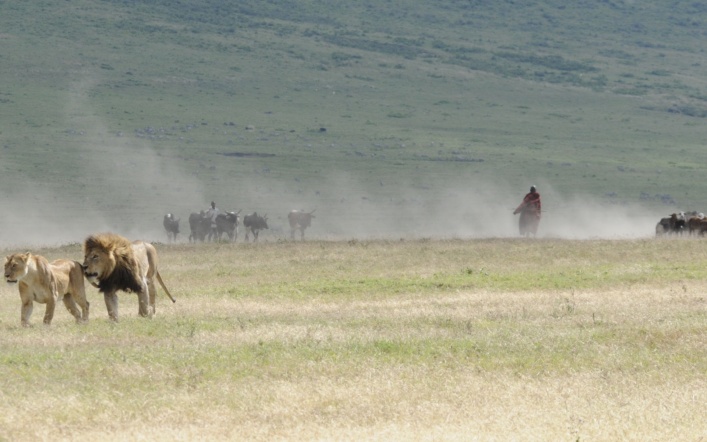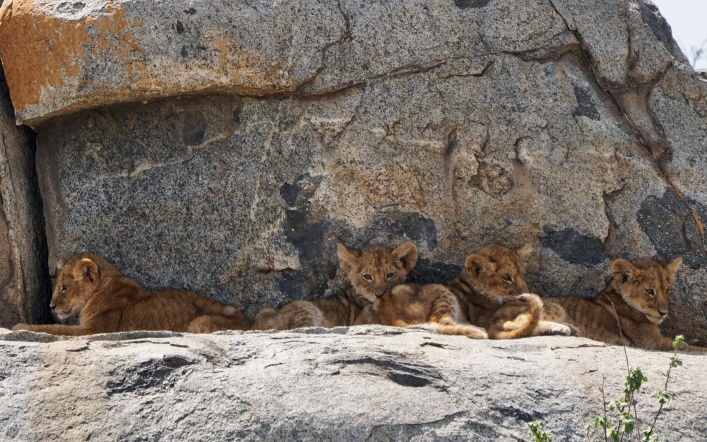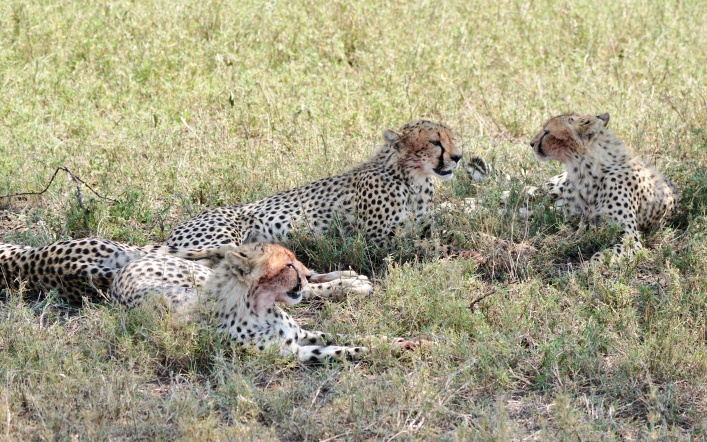The Predators in Africa…
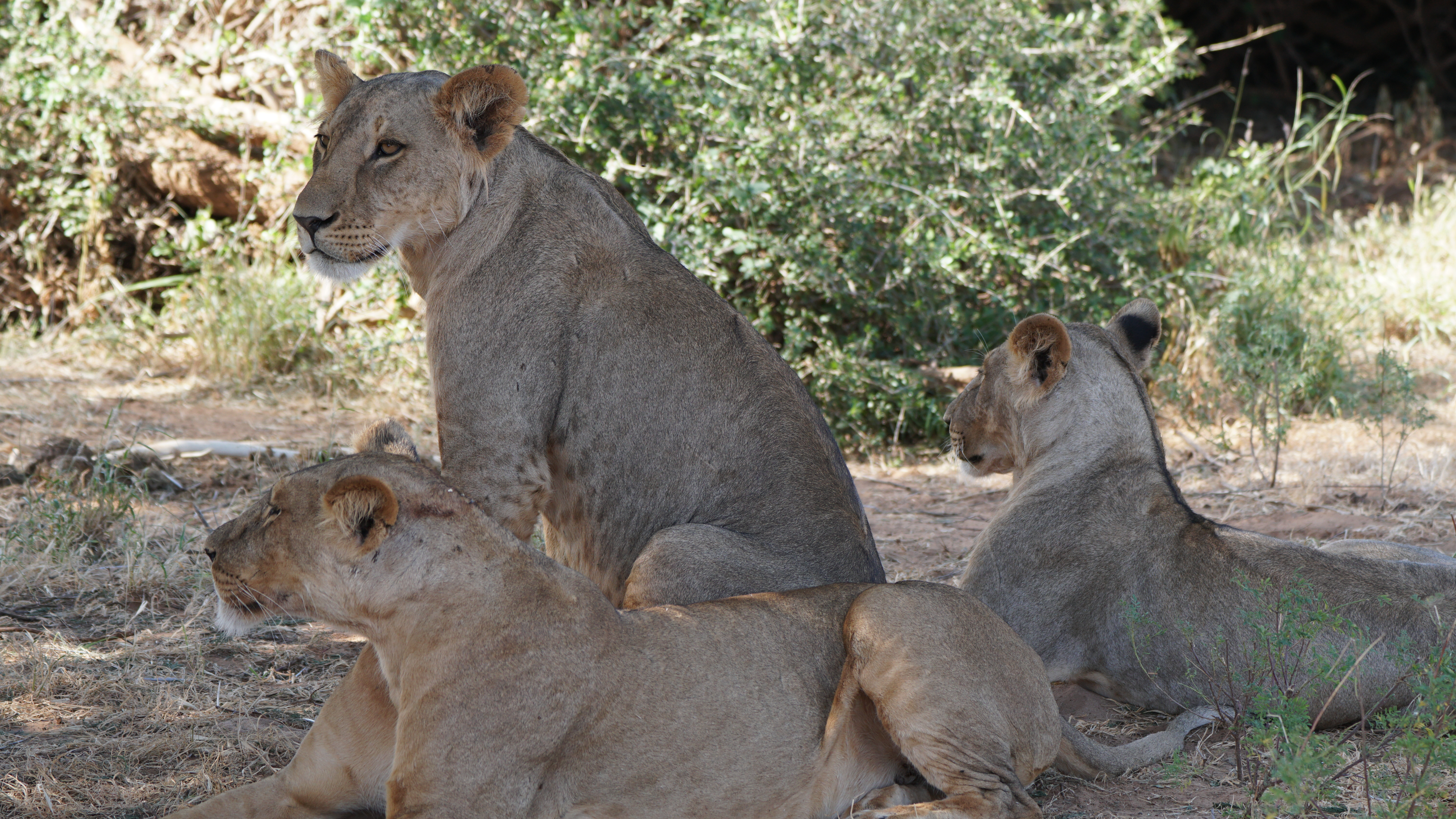
So many of the animals in Africa are grazers…when the food becomes scarce and dry in the Serengeti , they start to migrate to the Masai Mara where the grasslands are green, nutritious and lush. Zebras, giraffes, cape buffalos, antelopes, rhinos, and ostriches all feed side by side. They shouldn’t get too comfortable though, because there are also predators in the Masai Mara, and in this world, it’s survival of the strongest and most fit, it’s eat or be eaten. It’s a tough life for all. For all the animals, it’s all about taking care of their family, finding food every day, and staying alive until the next day.
The big cats are the most elusive, out early in the morning, hiding during the heat of the day, and coming out again in the cooler part of the afternoon. Whenever we see them, we were all really excited. The safari guides have an excellent communication network via radios, and they all talk to each other about what they find. When one finds an animal, the word quickly spreads, and before you know it, twenty jeeps show up.
Don’t let the size of this little one fool you. Jackals feed on both plants and small animals, and has incredibly sharp teeth. They may assemble in packs to scavenge a carcass, but they usually are found in monogamous pairs. We did see a few tiny pups that were so adorable…barely visible little squeak toys with huge ears running through the tall grass.
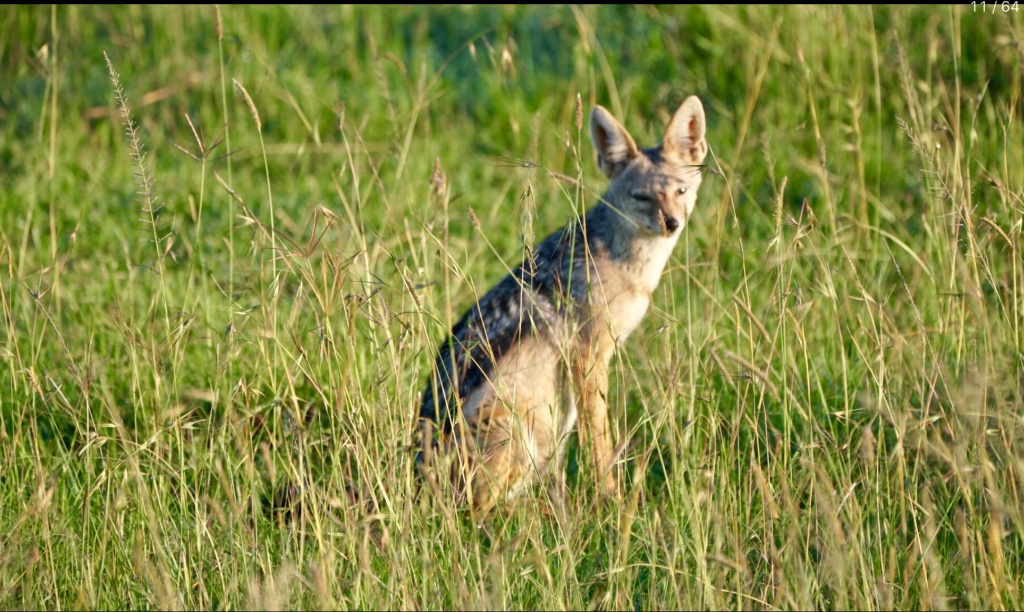
One of the top predators of the African grasslands is the hyena. They have such strong jaws that they can actually crunch through bones. They tend to be scavengers, often looking up into the sky for vultures to give them a clue where to find animals that have died. They often move in packs, where they are then capable of stealing hard earned kills from lions, leopards, and cheetahs, which does not endear them to me. They survive by constantly being on the lookout… for the weak, the injured, and the young. Their favorite food are the wildebeests.
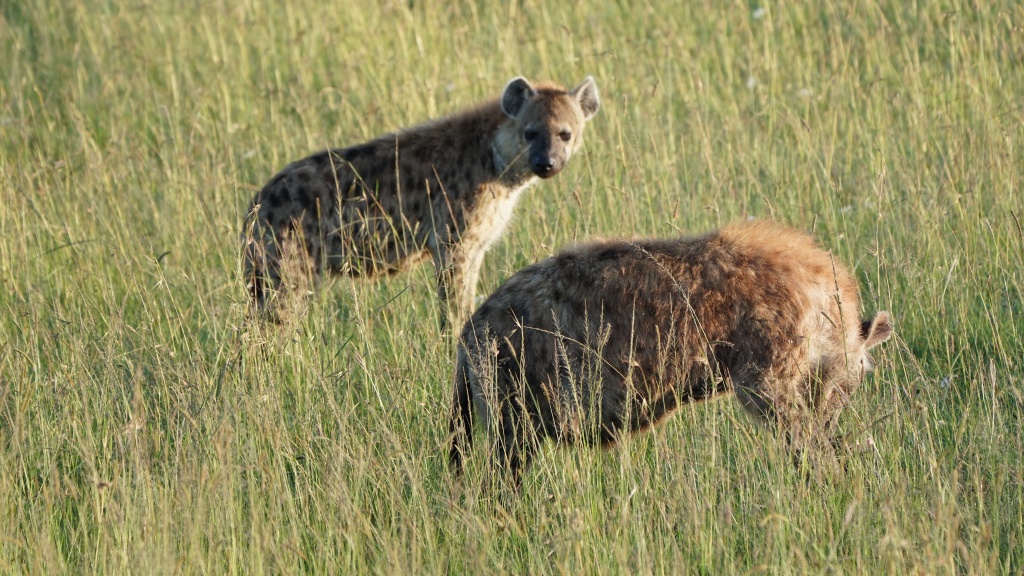
With their hind legs shorter than their front legs, and their powerful teeth, they look pretty sneaky and mean, but then again, I’ve probably been influenced by too many Disney movies that portray them as the ultimate villains of the African savannah. Other than lions, who will fight them over territory, protection of their young, and food, they have no natural enemies. Interesting fact is the females are the leaders of the pack, and the offspring inherit the status position in the pack of their mothers. They also have a very wicked laugh which you can hear when they are stressed, which makes them sound even more wicked…
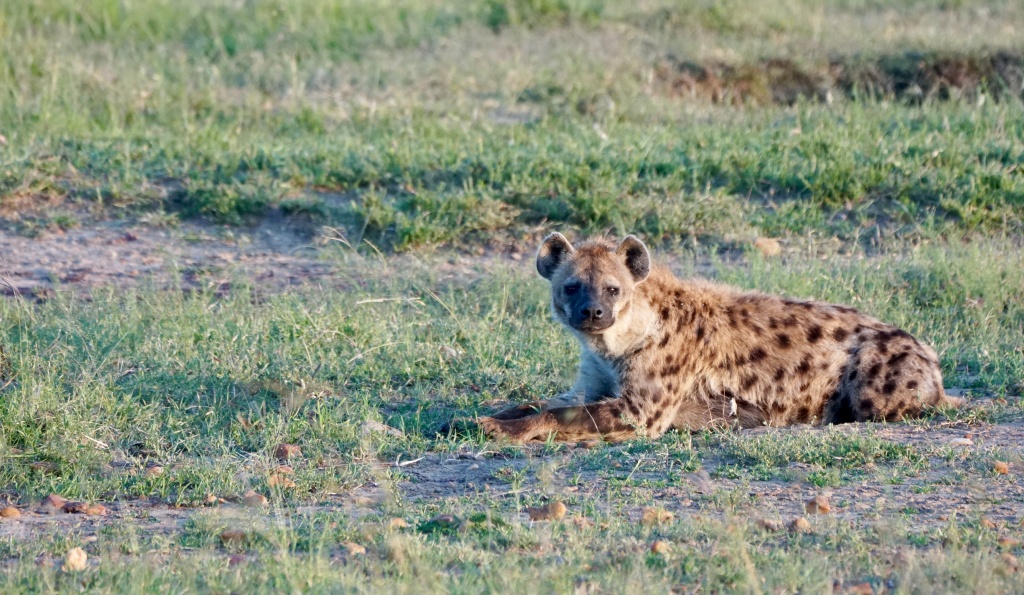
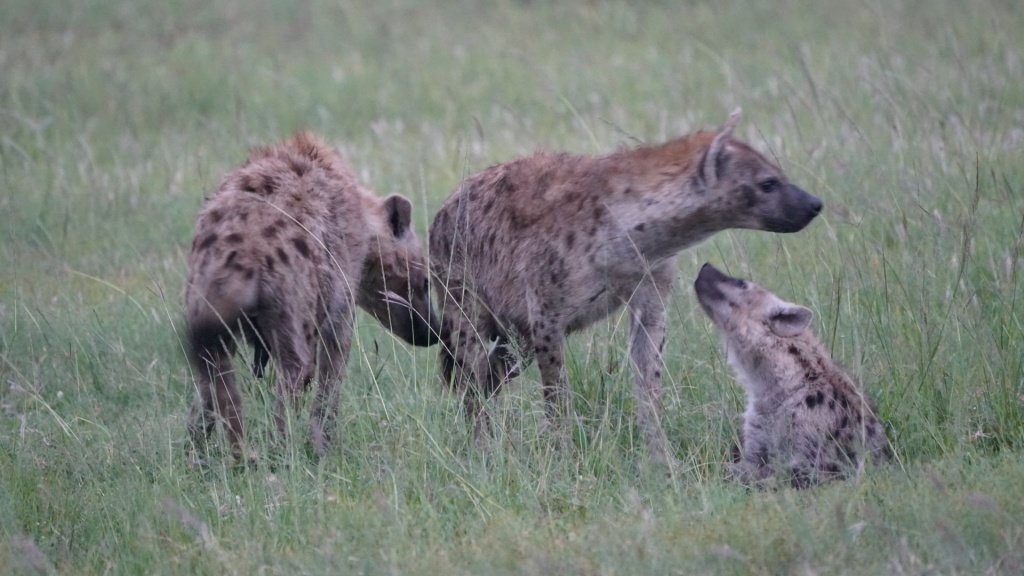
The vultures rest in the trees above watching from their vantage point high above. They are fairly large birds, over three feet tall, with seven foot wing spans. They mostly feed on dead carcasses which they find while soaring over the savannah. You can tell the juvenile on the right by the dark grey color. They really look ominous when they are circle overhead…

I don’t know how our guides can see these animals, but sure enough, there was a leopard hiding in this tree. Can you spot him?
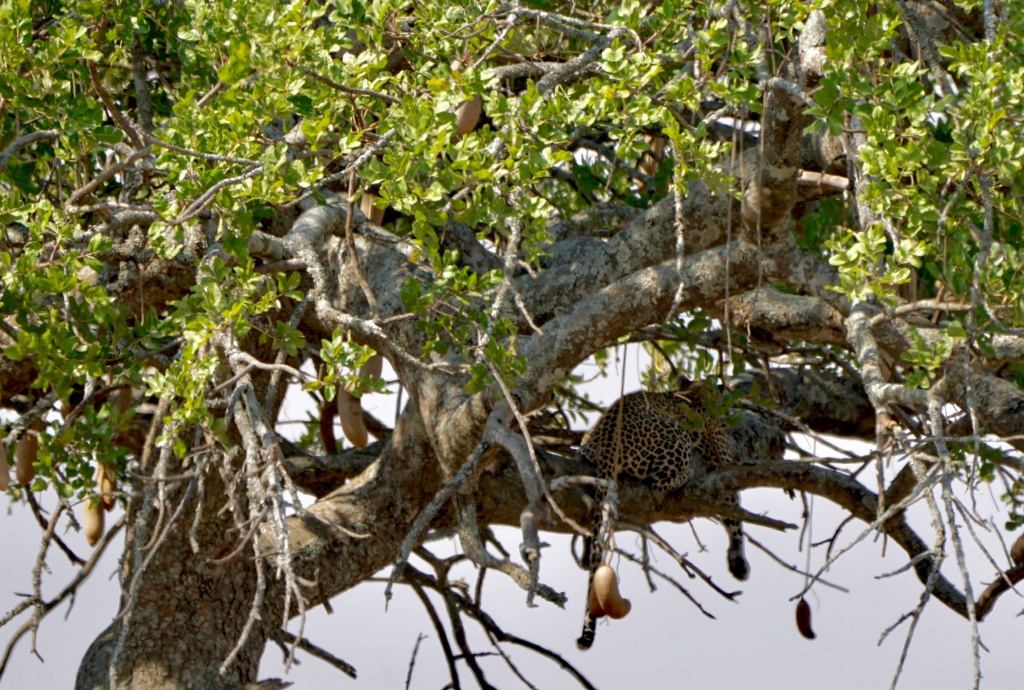
Leopards are solitary animals, and don’t enjoy the safety and strength of a pack. When they kill their prey, they often drag their food up into the trees to protect it from being stolen by a pack of hyenas. They can carry a prey that is three times their weight. We were surprised to find this kill up in the tree…the remains of a serval cat. Leopards don’t usually kill other cats, but if he came into the leopard’s territory, that would be crossing a line for which there is no going back. They are all very competitive when it comes to hunting for food.
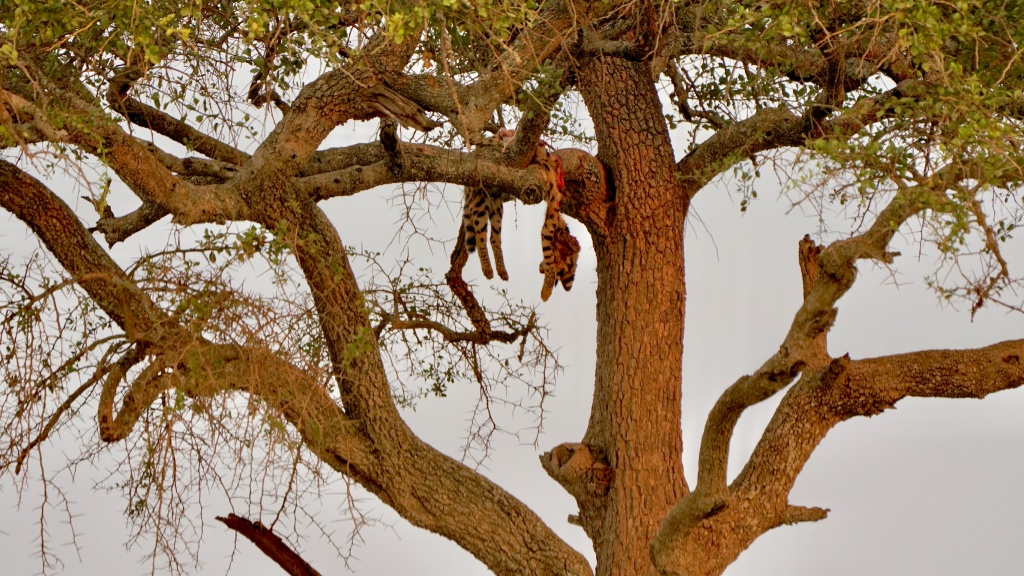
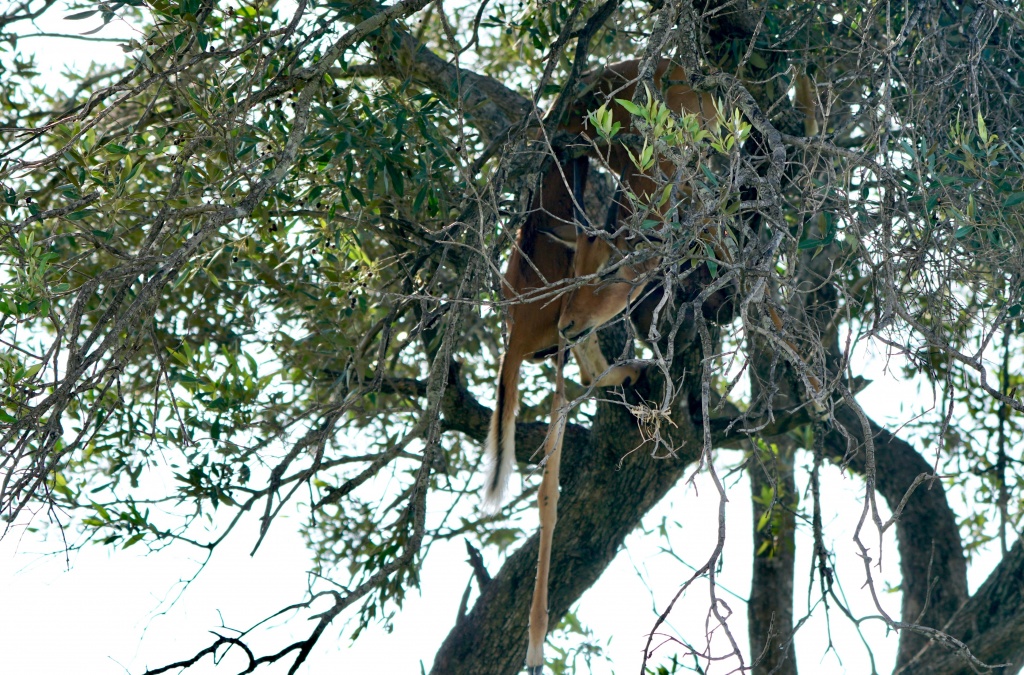
The waters can also be dangerous, especially for any animal coming down to the river’s edge, looking for a cool drink of water. The Nile crocodile is pretty motionless until it’s time to catch their prey.
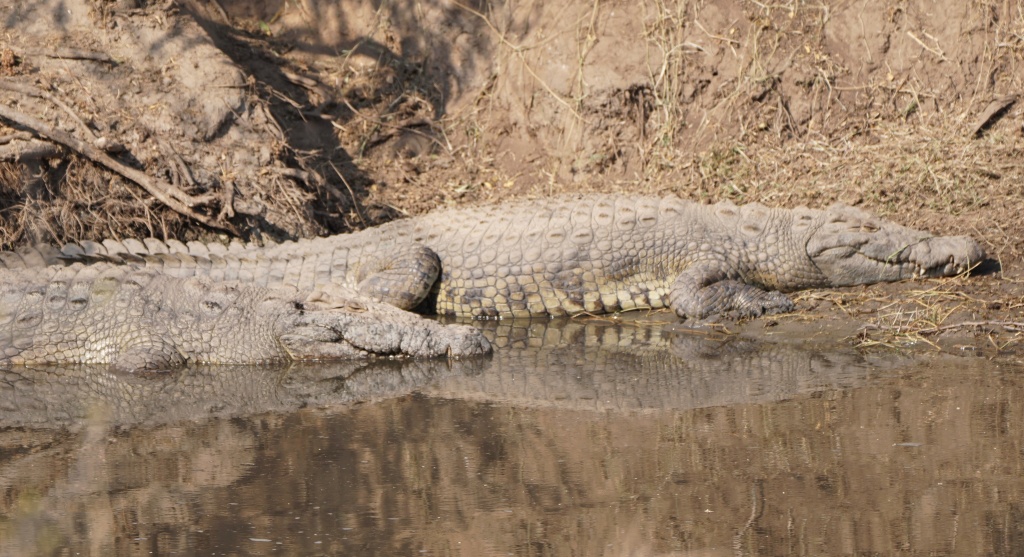
They eat mainly fish, but it will attack almost anything unfortunate enough to cross its path, including wildebeests, zebras, small hippos, birds, and other crocodiles. They grab their prey with their incredibly strong jaws, and then drag them underwater to drown. They can weigh up to 1200 pounds and eat half their body weight at a time.
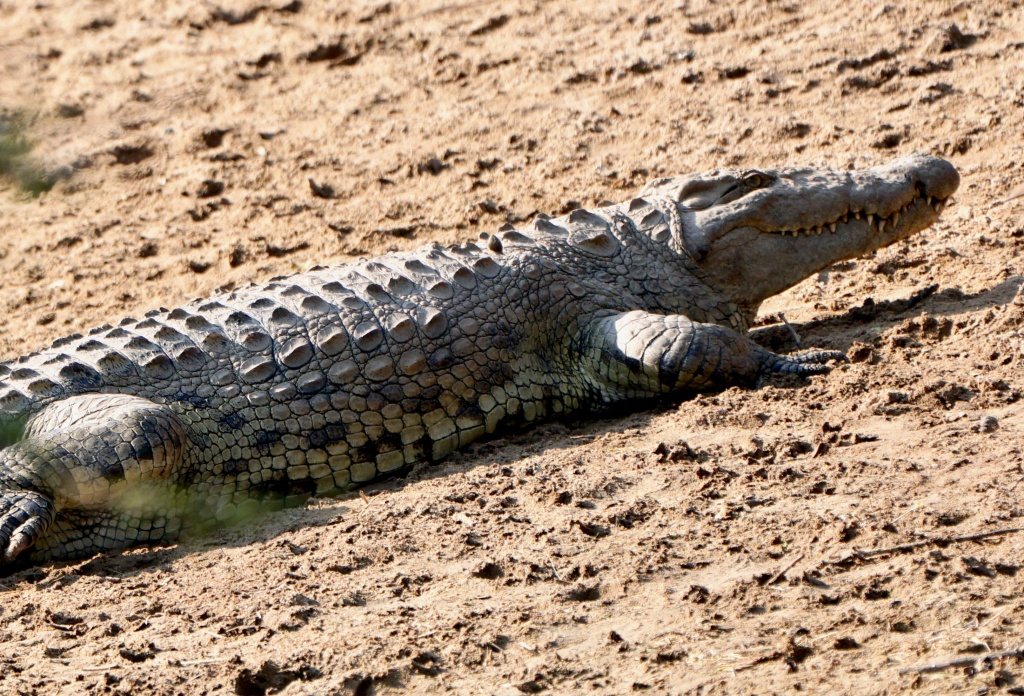
Earlier in the morning we saw two mama lions walking with seven little lion cubs bouncing behind them. We don’t know if these are the same lions, but in the afternoon, we found two of the lionesses relaxing in the sun, with four of the cubs napping by the river. They look so innocent when they are sleeping! No doubt, when they awaken from their afternoon naps, they will be looking for food and they will show a whole other side to them.
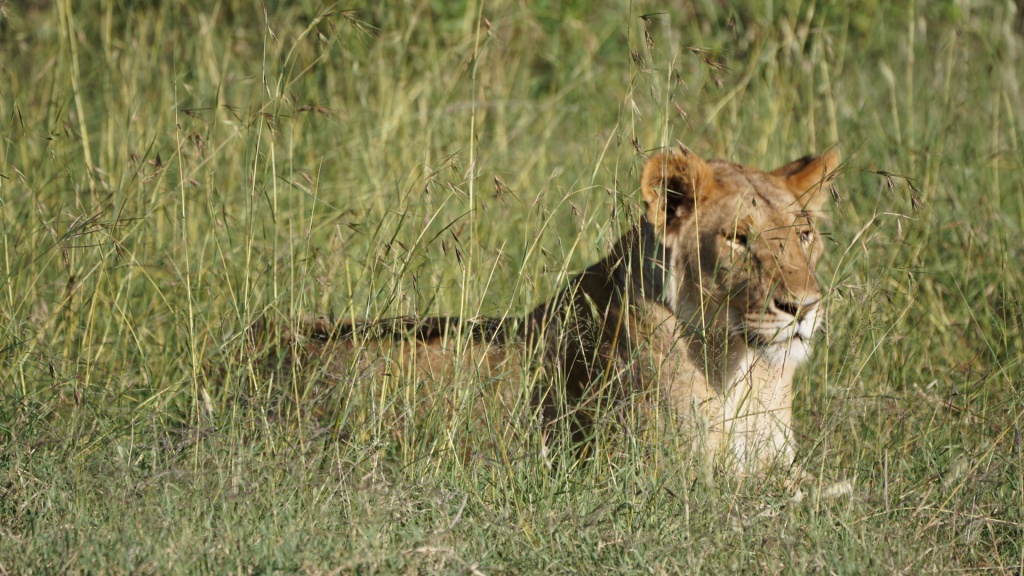
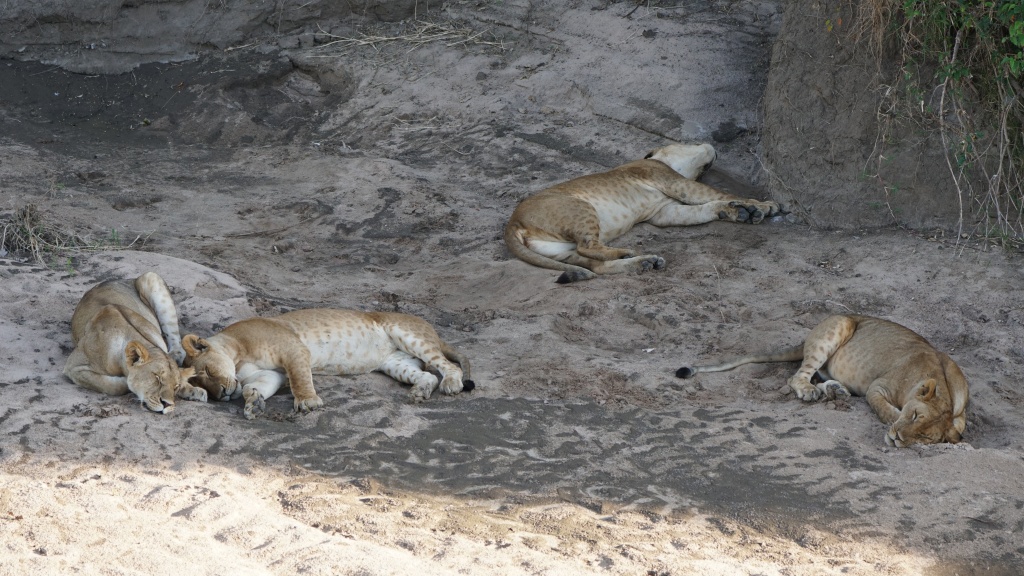
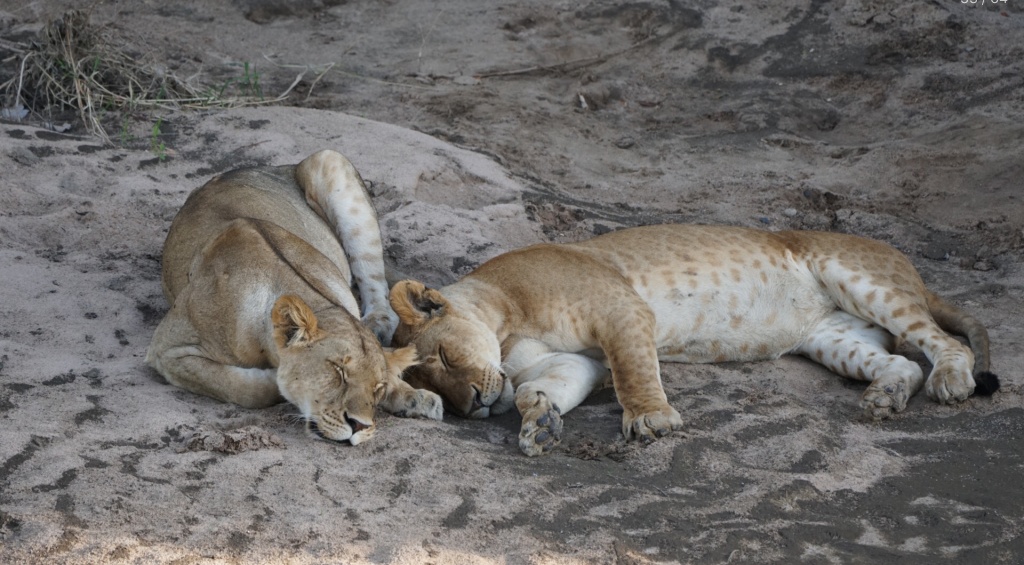
The lions are just so adorable when they are sleeping that you just want to go up and pet them. After all, it’s just a big kitty cat, right?
You only have to look at the size of their paws and teeth to know that it’s probably not a good idea.
It’s been another incredible day in the Masai Mara. We can’t wait for another game drive tomorrow.
